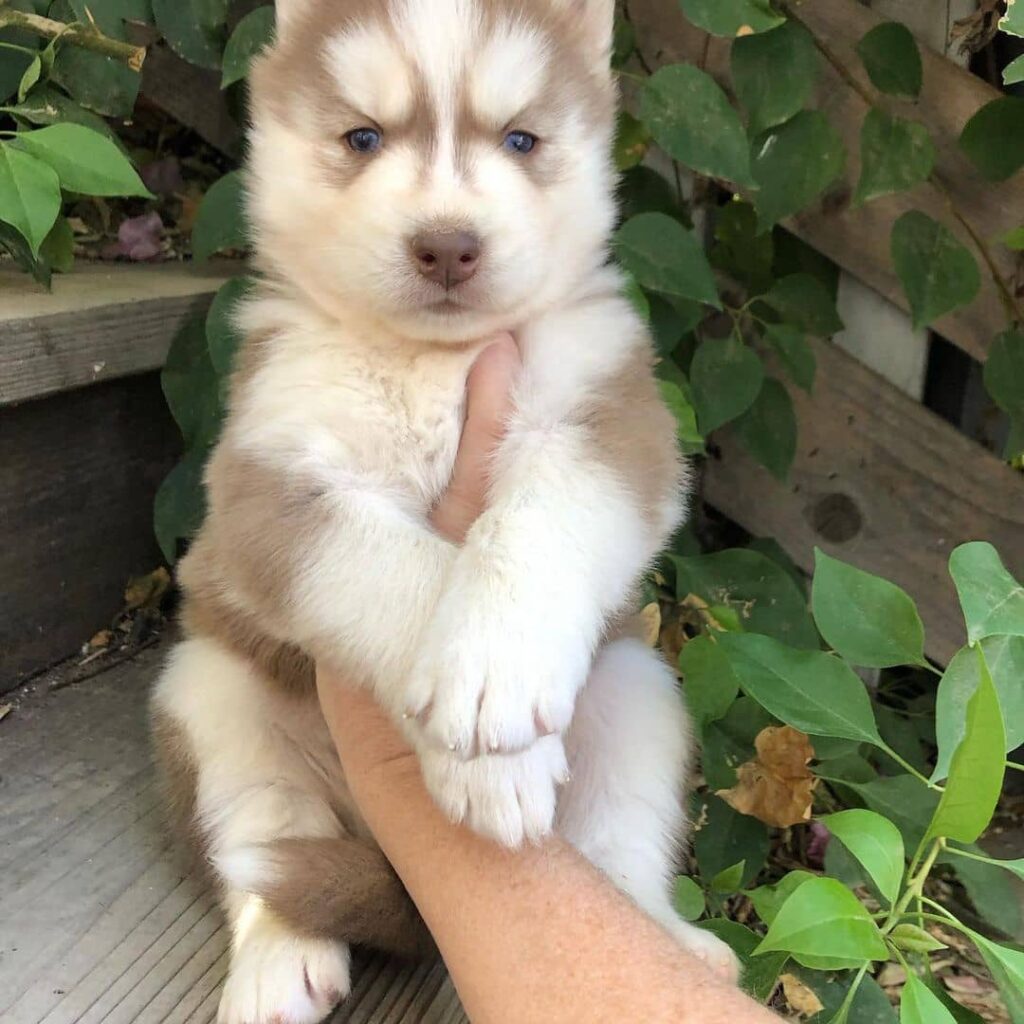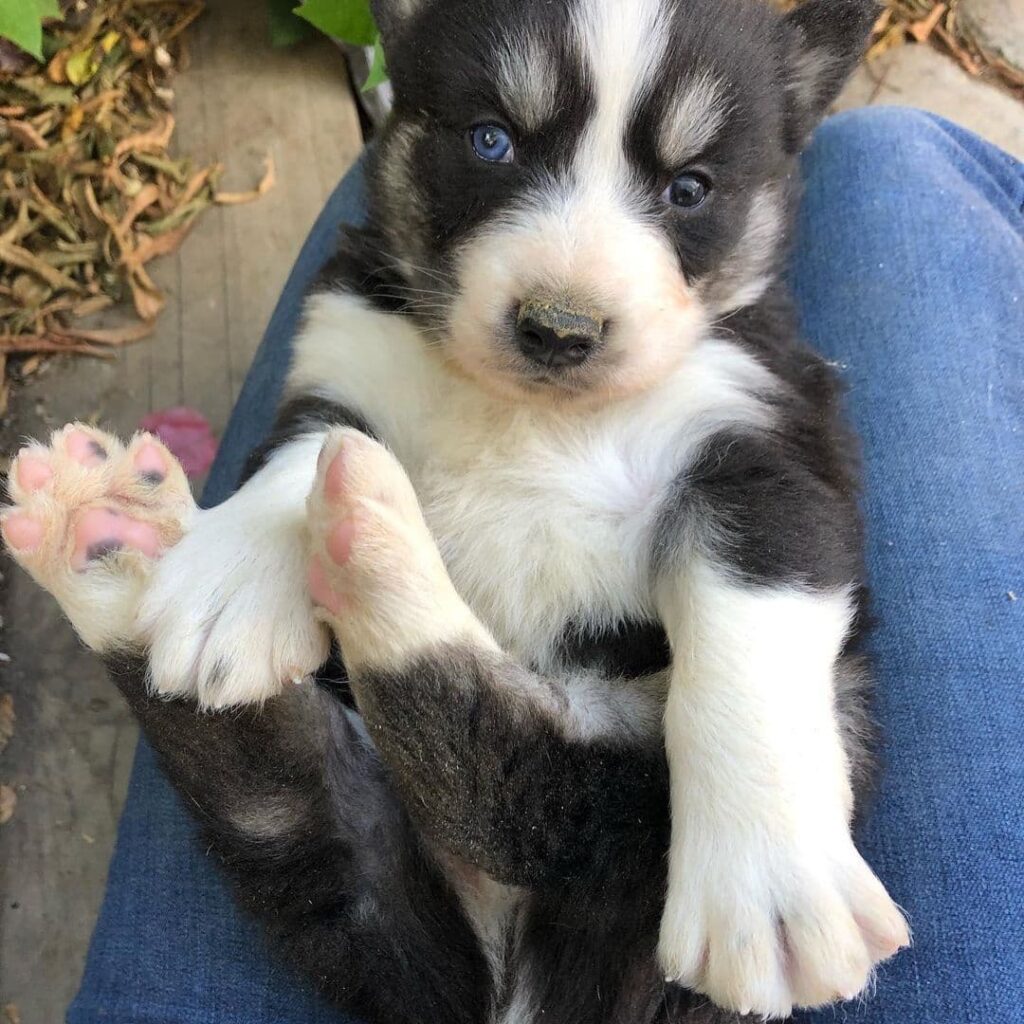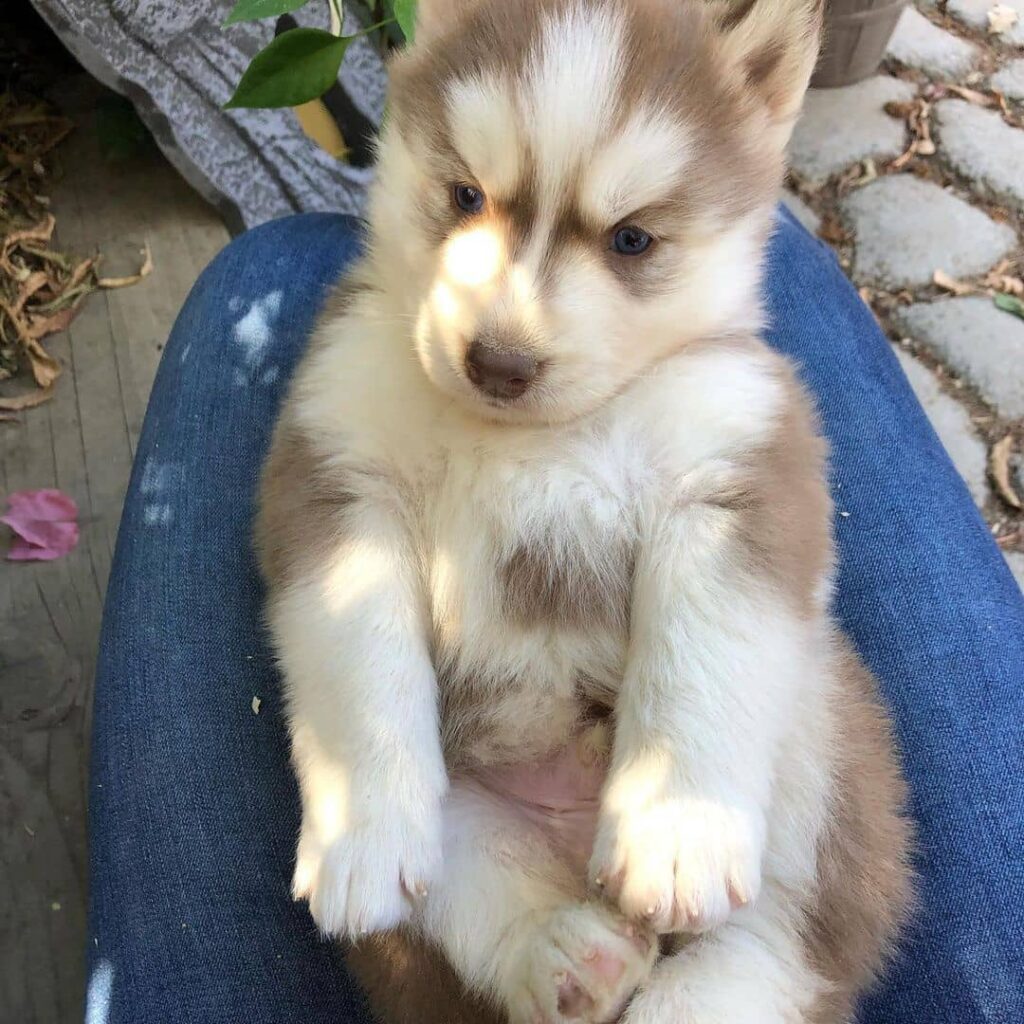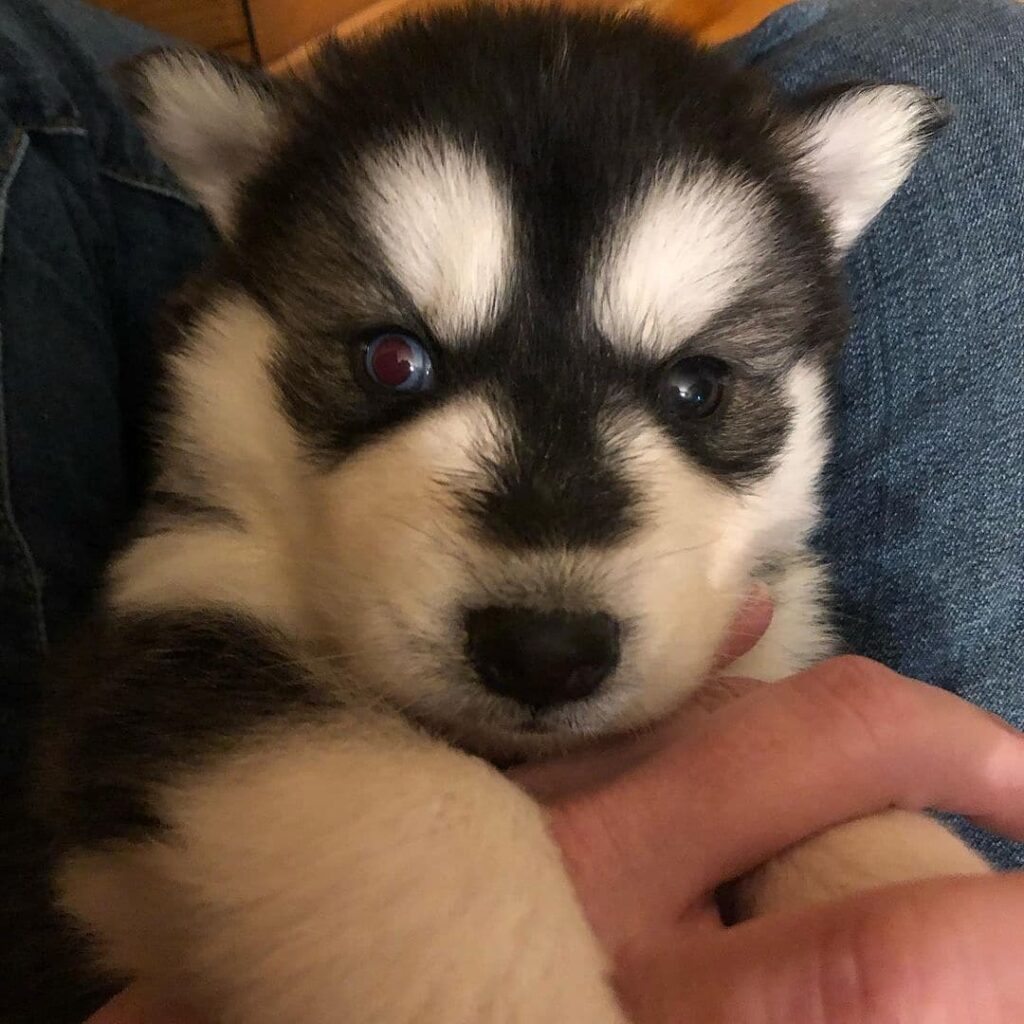Breed Standard: A description of the ideal dog of each recognized breed, to serve as an ideal against which dogs are judged at shows, originally laid down by a parent breed club and accepted officially by national or international bodies.
Siberian Husky Puppies For Sale
Breed Traits & Characteristics
The Breed Standard

Breed Traits & Characteristics
Even if you’re not planning on dog-sledding across Alaska, the Siberian Husky’s agreeable, outgoing temperament make him a great addition to your family. The breed won America’s heart in the 1920’s, when teams of Siberians rushed serum to diphtheria-stricken Nome. The breed’s willingness to work and love of exercise is matched with a friendly and gentle nature. These are sociable, energetic dogs and your Siberian Husky puppy will love being a member of your pack, including kids and dogs.
Origin: Siberia
Year Recognized: 1930
Breed History & Job Description: These dogs were originally bred in northeastern Asia by the Chukchi people and were kept as companion dogs for their families as well as endurance sled dogs. They caught the eye of the public when they began winning sled races in the early 1900s, but they made headlines in 1925 when a relay of Siberian Huskies traveled 658 miles in only 5 and half days to rush a lifesaving serum to Nome, Alaska,
What To Expect When Caring For a Siberian Husky puppy
Siberian Huskies are generally a healthy breed. Like all breeds there may be some health issues, like hip dysplasia and eye disease. Some dogs may be faced with these health challenges in their lives, but the majority of Siberian Huskies are healthy dogs. Compared to other breeds, they maintain a healthy weight on less food, but you should feed them a high-quality protein-based food. He was bred to pull a light load at a fast pace over great distances in low temperatures on the smallest possible intake of food. A thinner dog will live a longer, happier, healthier life.
Siberian Husky, a thickly coated, compact sled dog of medium size and great endurance, was developed to work in packs, pulling light loads at moderate speeds over vast frozen expanses. Sibes are friendly, fastidious, and dignified. The graceful, medium-sized Siberian Husky’s almond-shaped eyes can be either brown or blue’¿and sometimes one of each’¿and convey a keen but amiable and even mischievous expression. Quick and nimble-footed, Siberians are known for their powerful but seemingly effortless gait. Tipping the scales at no more than 60 pounds, they are noticeably smaller and lighter than their burly cousin, the Alaskan Malamute. As born pack dogs, they enjoy family life and get on well with other dogs. The Sibe’s innate friendliness render them indifferent watchdogs. These are energetic dogs who can’t resist chasing small animals, so secure running room is a must. An attractive feature of the breed: Sibes are naturally clean, with little doggy odor.
Avaialable Siberian Husky Puppies For Sale
History
The Siberian Husky’s compact body, well-furred coat, erect ears, and thick, sickle-shaped tail immediately suggest the breed’s northern heritage. The breed’s ancestors were originally bred in northeastern Asia by the Chukchi people and were kept as companion dogs for their families as well as endurance sled dogs. When changing climate conditions forced the semi-nomadic Chukchi to expand their hunting grounds or perish, they rose to the challenge by developing a sled dog capable of hauling light loads over vast expanses of frozen wasteland in sub-zero temperatures, with a minimum expenditure of energy. The Chukchi, isolated by from the rest of the world, were able to maintain the purity of their sled teams for many generations. The dogs they developed were the direct forerunners of today’s Siberian Husky. Siberians caught the eye of the public when they began winning sled races in the early 1900s, but they made headlines in 1925 when a legendary musher Leonhard Seppala led a relay of Siberian Huskies 658 miles in only five and half days to rush a lifesaving serum to Nome, Alaska, where an epidemic of diphtheria had broken out. The thrilling ‘serum run,’ reported breathlessly in newspapers around the world, won Sibes a popularity that has not abated to this day. Balto, who was Seppala’s lead dog on the final leg of the journey, remains one of the most honored hero dogs in canine history. Mushers still keep packs of sledding Siberians for fun and sport throughout North America. Less adventurous devotees of the breed simply enjoy the company of this sociable, gentle companion.





